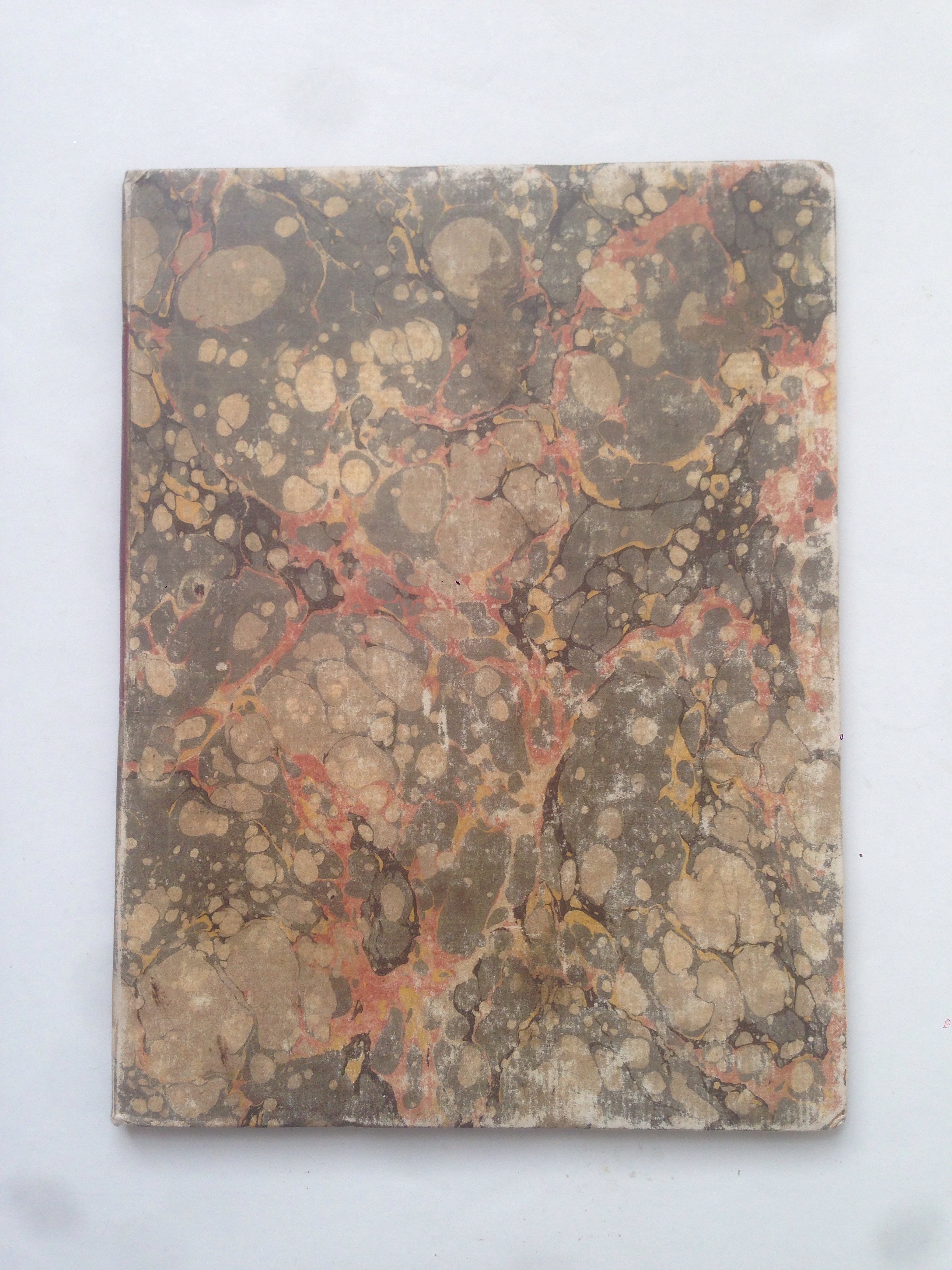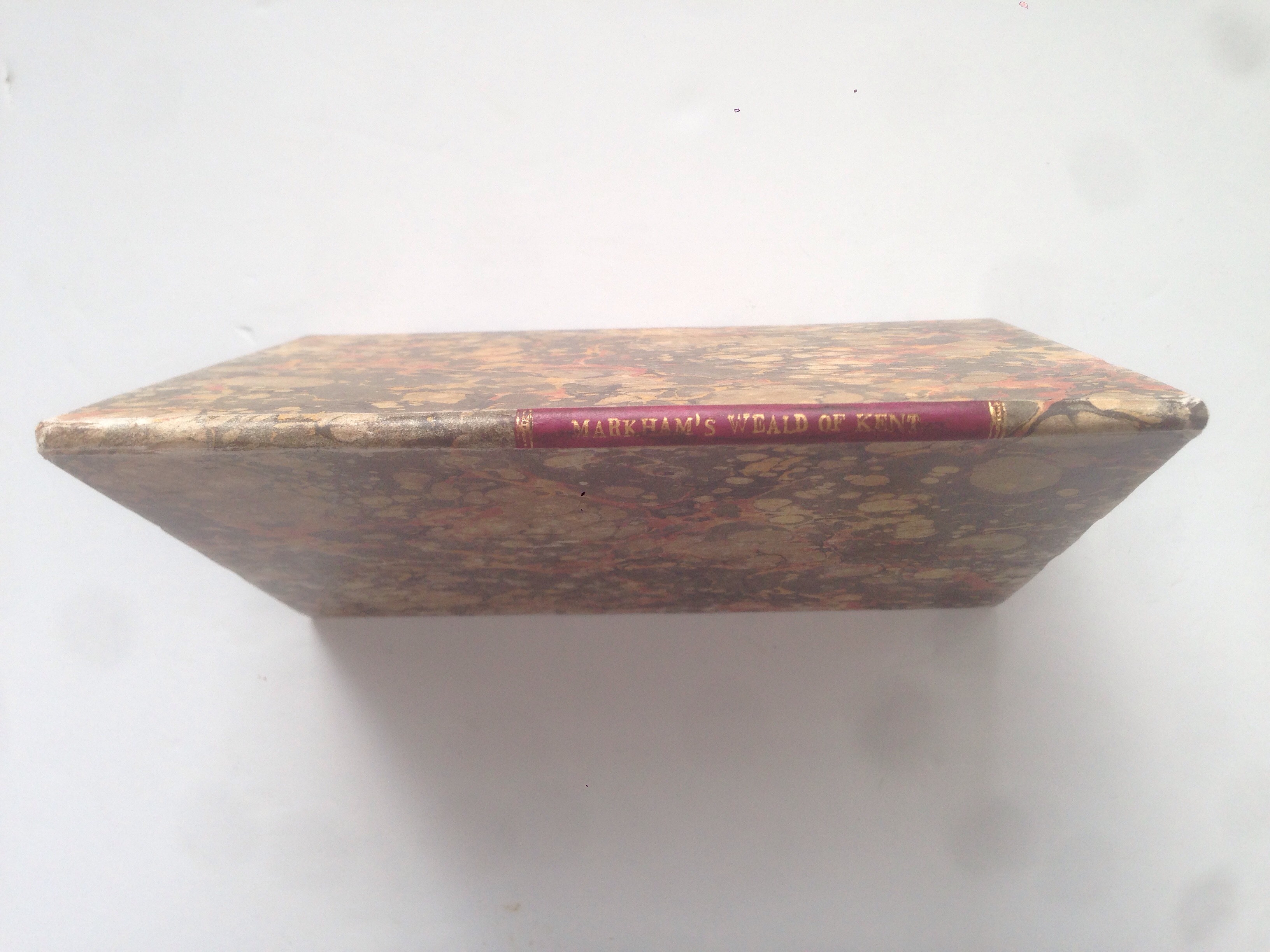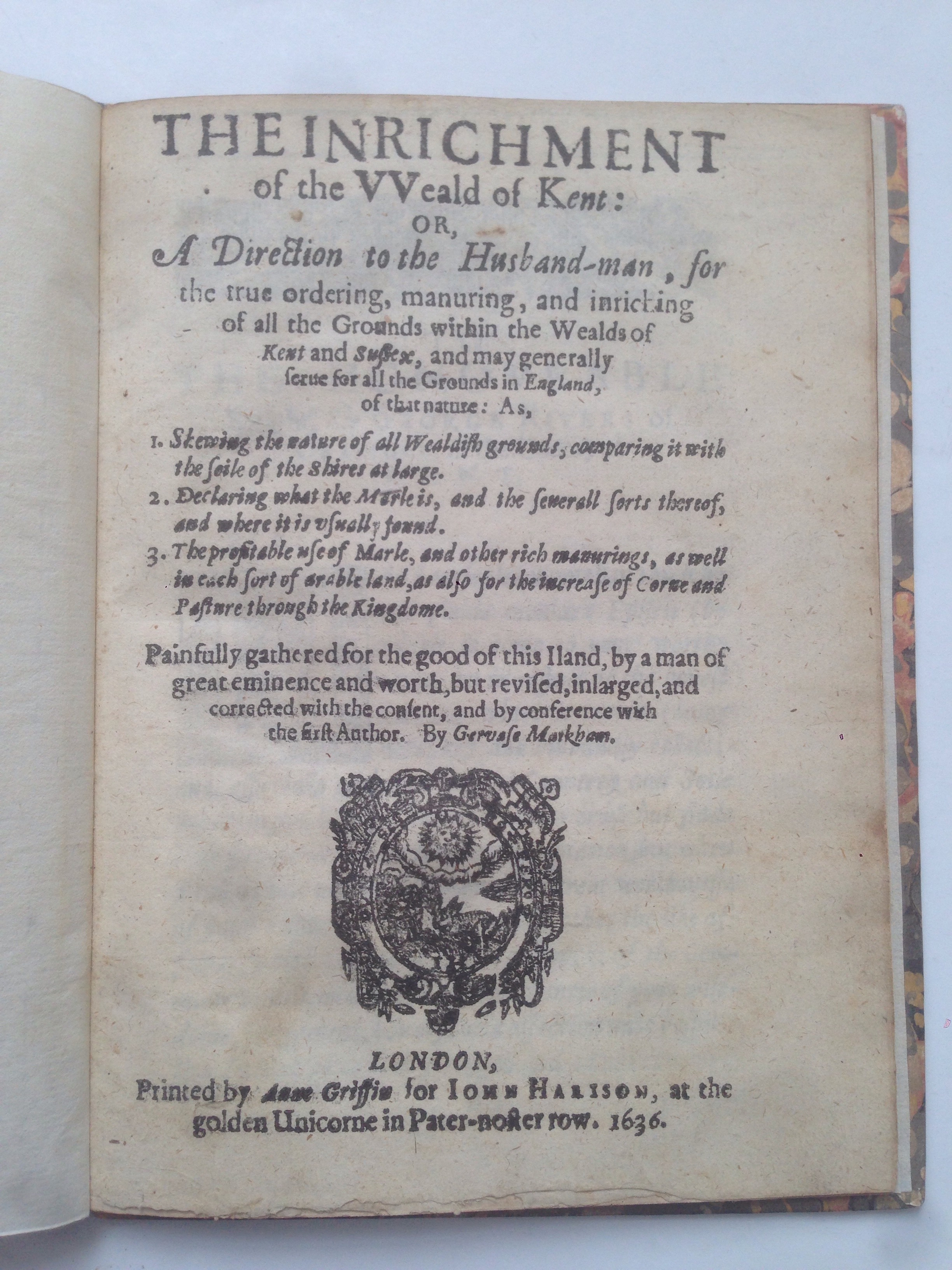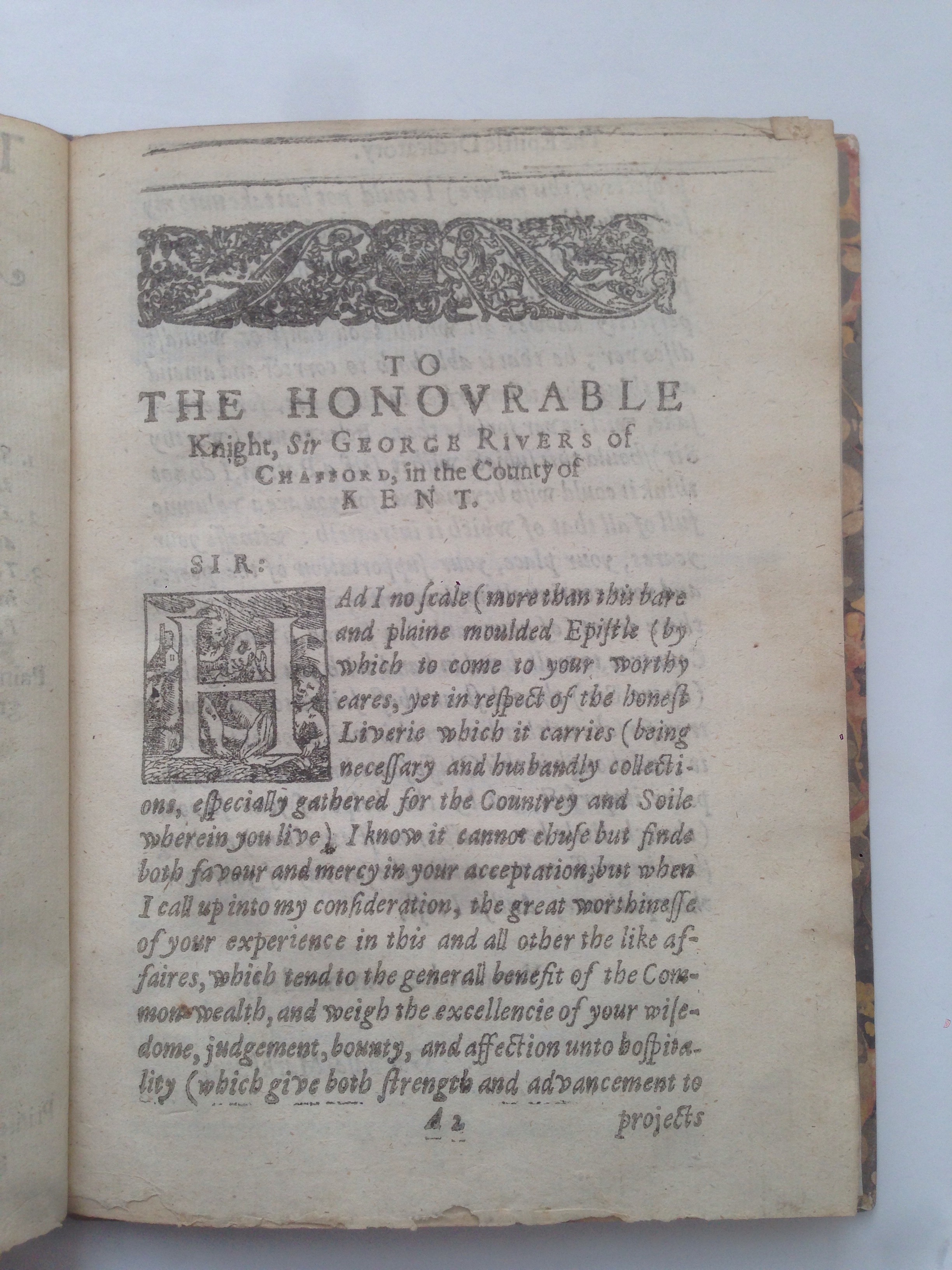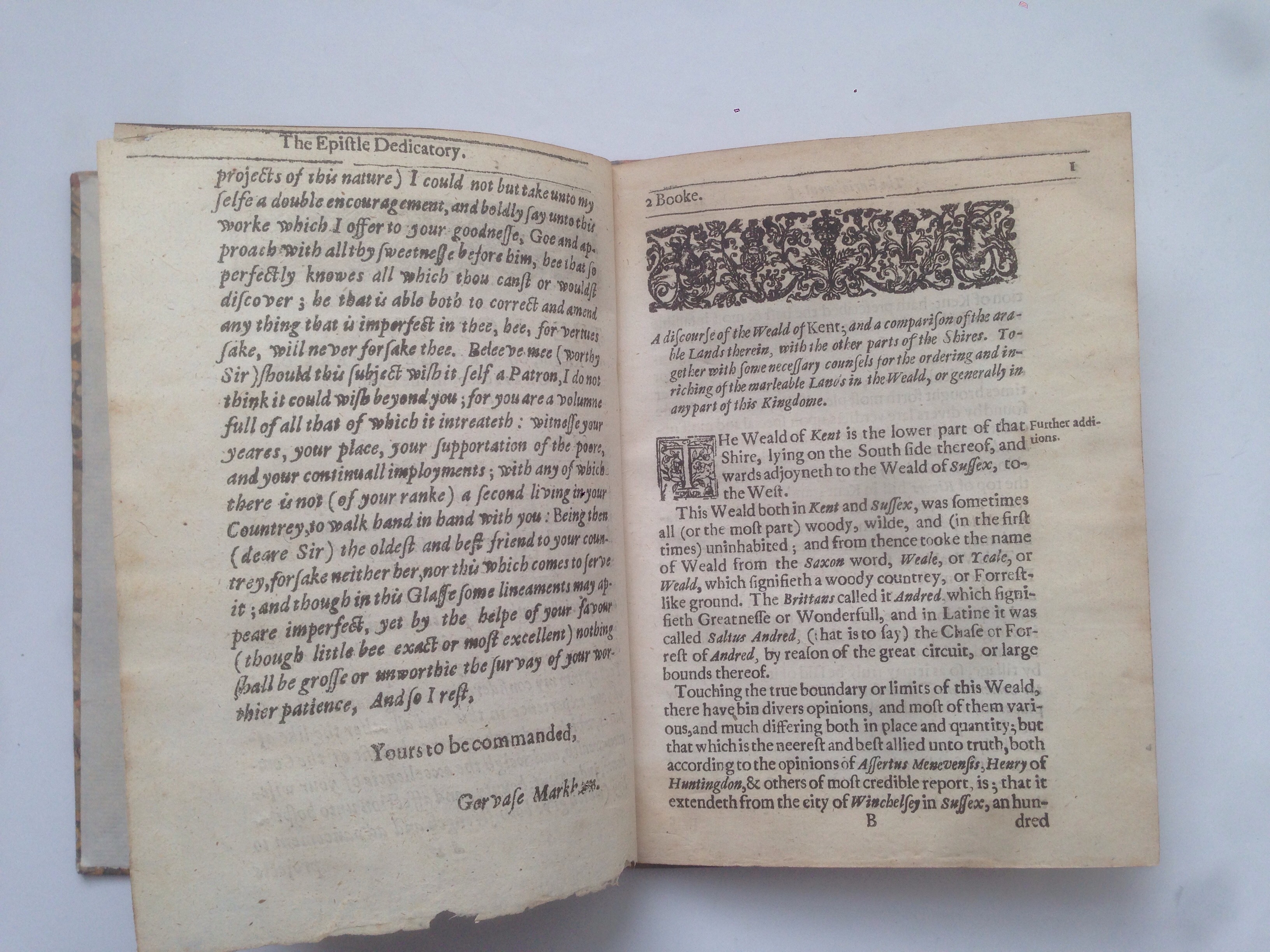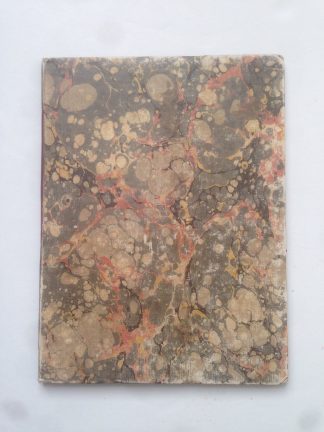MARKHAM, Gervase
The inrichment of the vveald of Kent: or, A direction to the husband-man
London, rinted by Anne Griffin for Iohn Harison, 1636£1,250.00
4to. pp. [iv], 24. A², B , C . Roman letter some Italic. Small woodcut printer’s device on title, woodcut initials and headpieces. Light age yellowing, the odd marginal mark or spot. A very good copy, crisp and clean, in marbled boards.
Third edition of this most interesting agricultural work, first published in 1625, concerning improving the soils of the Weald of Kent. Much is taken verbatim from Markham’s earlier work on soil improvement, ‘farewell to husbandry’ but here is of great interest as it has applied his techniques specifically to a particular region of England. “In the pamphlet, ’The inrichment of the weald of Kent’ of 1625, the Author advocated a systematic program for improving the productivity of the ‘unapt’ soils of the region. It was to be based on the regular spreading of Marl (which was commonly found in the Weald) to enrich the ground, and, equally important, the introduction of ley farming to the enclosed fields which have previously been used for either pasture or arable. A complete dressing of marl – the author recommended 300 to 500 loads per acre – would serve for 20 to 30 years: ‘your marlable grounds being ordered in this wise .. will continue to stand fruitfully either for corn or pasture’. The improver did not go into much detail about the cost of systematic marling, but gave the game away when he referred to the farm he had in mind. Under his scheme the ‘husbandman’ of 100 or 125 acres will plough a fifth or sixth of his land, leaving the rest to pasture, and after a few years the former arable would become pasture again, as former grassland was ploughed up for corn in turn. In the sixteenth century, however, the farm of 125 acres in the Weald was exceptional, and the improvers prescription, had it been widely known, was beyond the budget of most Wealden farmers. Nevertheless, such grandiose schemes for dressing both the arable and pasture land of whole farms speak loudly of the recurring reality of Wealden farming: most Wealden soils were poor and unproductive compared to nearby arable regions like northeast Kent.” Michael Zell ‘Industry in the Countryside: Wealden Society in the Sixteenth Century’.
“Many books on agriculture and gardening were published during the century, but from the historical point of view the most important are those of Markham, because they appeared at an early stage in the new development, were widely read, and full of useful information and sound advice. Markham was a too prolific writer, but one can forgive his constant repetition and shameless re-issuing of unsold books under a new title for the great influence his writings had on English agriculture.” Anne Wilbraham ‘The Englishman’s Food: Five Centuries of English Diet’.
STC 17365. ESTC S120912. Poynter p. 150 No. 32 (1625 edn)In stock


